Shuyi Zhou
Robust LiDAR-Camera Calibration with 2D Gaussian Splatting
Apr 01, 2025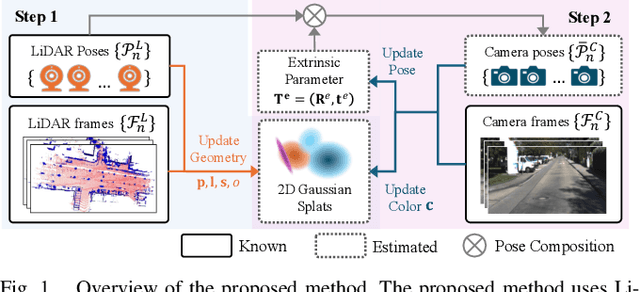

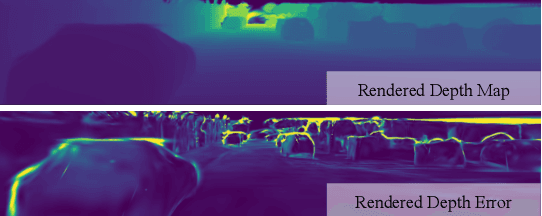

Abstract:LiDAR-camera systems have become increasingly popular in robotics recently. A critical and initial step in integrating the LiDAR and camera data is the calibration of the LiDAR-camera system. Most existing calibration methods rely on auxiliary target objects, which often involve complex manual operations, whereas targetless methods have yet to achieve practical effectiveness. Recognizing that 2D Gaussian Splatting (2DGS) can reconstruct geometric information from camera image sequences, we propose a calibration method that estimates LiDAR-camera extrinsic parameters using geometric constraints. The proposed method begins by reconstructing colorless 2DGS using LiDAR point clouds. Subsequently, we update the colors of the Gaussian splats by minimizing the photometric loss. The extrinsic parameters are optimized during this process. Additionally, we address the limitations of the photometric loss by incorporating the reprojection and triangulation losses, thereby enhancing the calibration robustness and accuracy.
* Accepted in IEEE Robotics and Automation Letters. Code available at: https://github.com/ShuyiZhou495/RobustCalibration
INF: Implicit Neural Fusion for LiDAR and Camera
Aug 28, 2023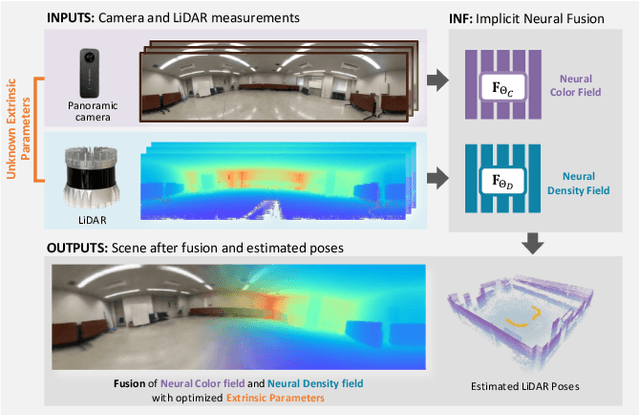
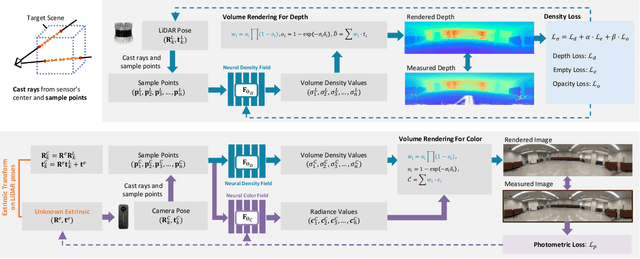
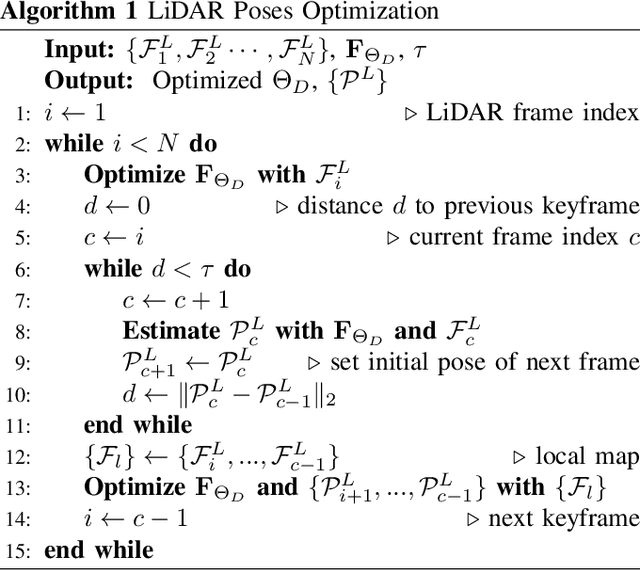

Abstract:Sensor fusion has become a popular topic in robotics. However, conventional fusion methods encounter many difficulties, such as data representation differences, sensor variations, and extrinsic calibration. For example, the calibration methods used for LiDAR-camera fusion often require manual operation and auxiliary calibration targets. Implicit neural representations (INRs) have been developed for 3D scenes, and the volume density distribution involved in an INR unifies the scene information obtained by different types of sensors. Therefore, we propose implicit neural fusion (INF) for LiDAR and camera. INF first trains a neural density field of the target scene using LiDAR frames. Then, a separate neural color field is trained using camera images and the trained neural density field. Along with the training process, INF both estimates LiDAR poses and optimizes extrinsic parameters. Our experiments demonstrate the high accuracy and stable performance of the proposed method.
AI-GOMS: Large AI-Driven Global Ocean Modeling System
Aug 10, 2023



Abstract:Ocean modeling is a powerful tool for simulating the physical, chemical, and biological processes of the ocean, which is the foundation for marine science research and operational oceanography. Modern numerical ocean modeling mainly consists of governing equations and numerical algorithms. Nonlinear instability, computational expense, low reusability efficiency and high coupling costs have gradually become the main bottlenecks for the further development of numerical ocean modeling. Recently, artificial intelligence-based modeling in scientific computing has shown revolutionary potential for digital twins and scientific simulations, but the bottlenecks of numerical ocean modeling have not been further solved. Here, we present AI-GOMS, a large AI-driven global ocean modeling system, for accurate and efficient global ocean daily prediction. AI-GOMS consists of a backbone model with the Fourier-based Masked Autoencoder structure for basic ocean variable prediction and lightweight fine-tuning models incorporating regional downscaling, wave decoding, and biochemistry coupling modules. AI-GOMS has achieved the best performance in 30 days of prediction for the global ocean basic variables with 15 depth layers at 1/4{\deg} spatial resolution. Beyond the good performance in statistical metrics, AI-GOMS realizes the simulation of mesoscale eddies in the Kuroshio region at 1/12{\deg} spatial resolution and ocean stratification in the tropical Pacific Ocean. AI-GOMS provides a new backbone-downstream paradigm for Earth system modeling, which makes the system transferable, scalable and reusable.
 Add to Chrome
Add to Chrome Add to Firefox
Add to Firefox Add to Edge
Add to Edge